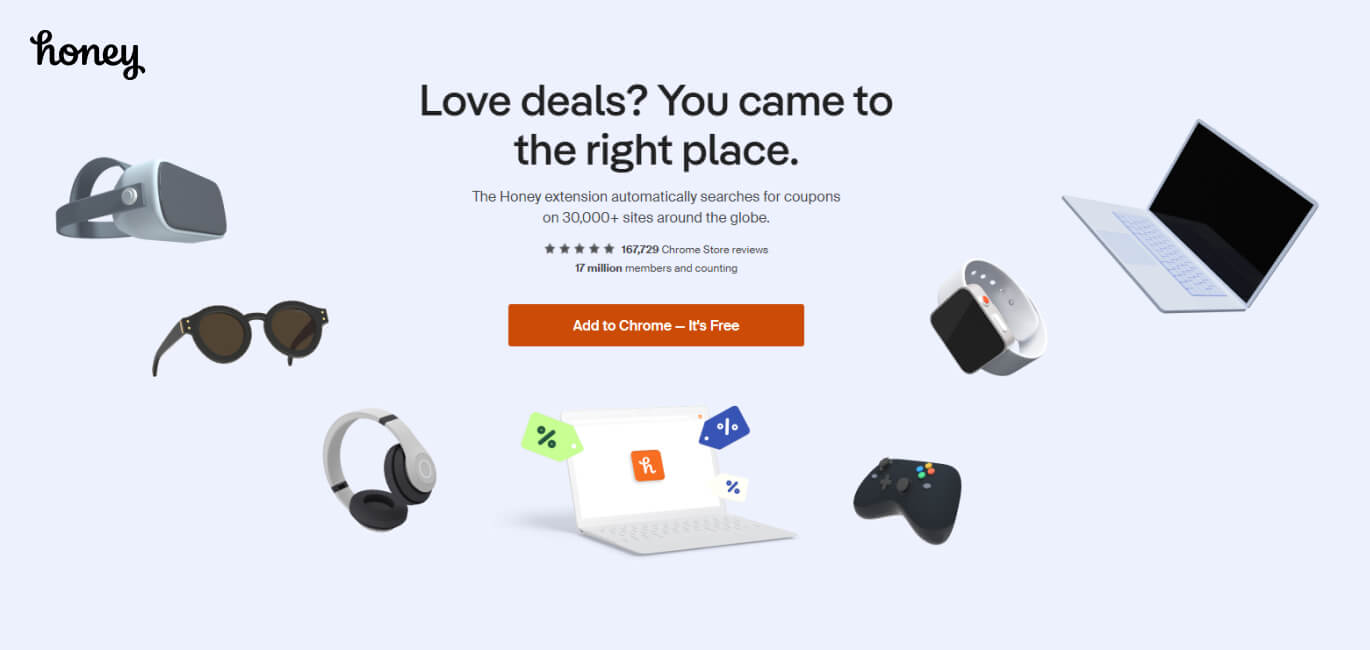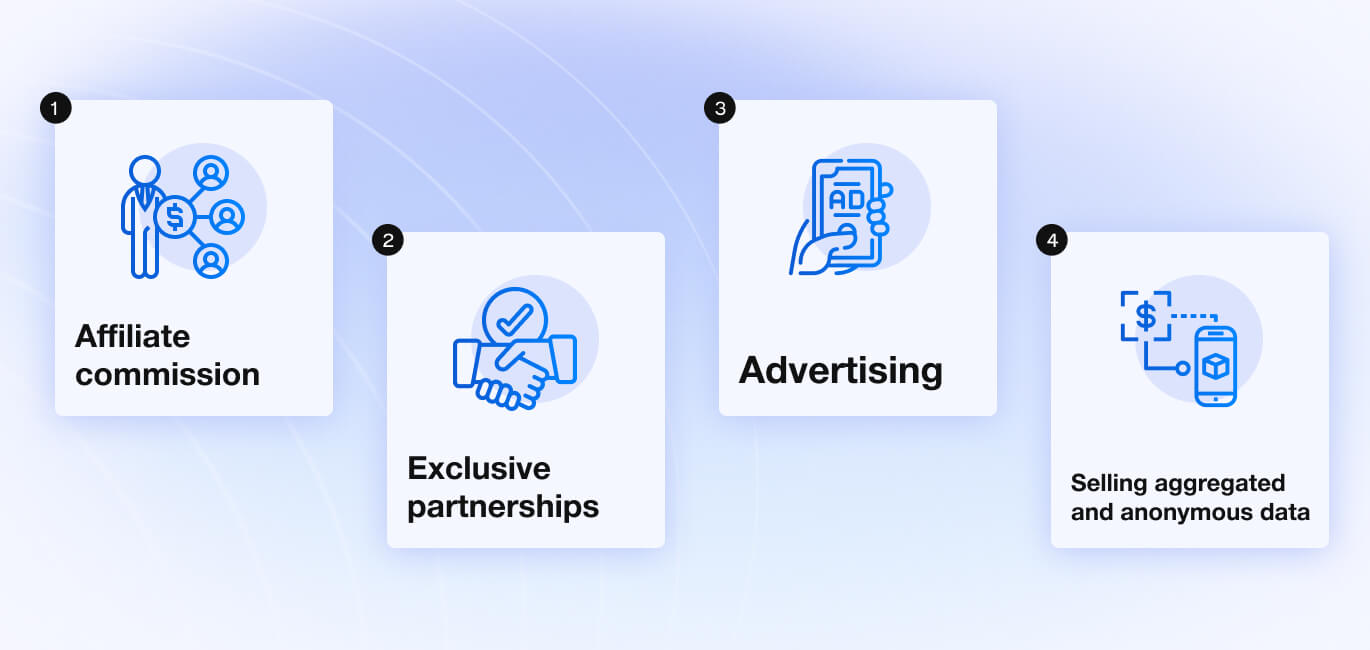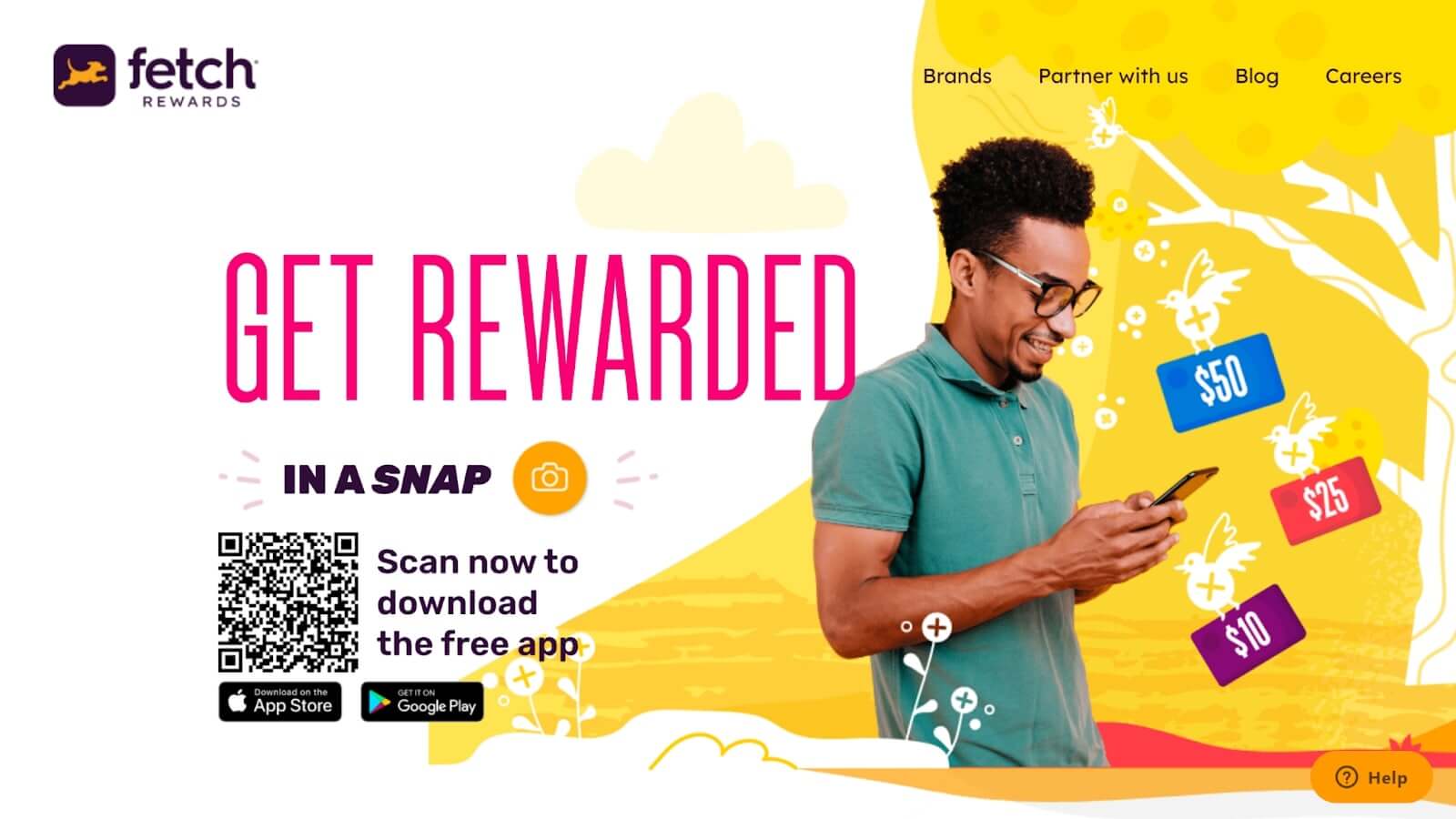Coupon App Development: How to Make a Cash-Back App
 28 April 2022
28 April 2022Are you wondering how to build a cashback app? Cashback apps demonstrate real value to users.
Already, there have been runaway successes such as Ibotta — with over 35 million downloads and Rakuten —with an active user base of over 12 million customers. It can prove to be a rewarding venture.
That said, cashback app development may require more steps compared to coupon app development. For instance, the cashback app needs to split commissions with its users and offer pay-outs by sending out checks, funding gift cards, or using Paypal settlements.
Another challenge is confirming that users have bought items from partners by validating their online or in-store receipts.
Given the project’s complexities, you must carefully consider the cashback app development company to hire.
Knowing how much it may cost to build a cashback app will also become critical for your financial planning and idea viability assessment.
If you are building a cashback app as a third party, you can start thinking of potential affiliate partners and stores before embarking on the development process.
Today’s guide introduces how to make an app like Ibotta that offers cashback on purchases at partnered stores. Let’s get started.
Coupon Cash Back Apps: A Market Overview
Cashback sites and apps now drive billions in sales, with retailers opening up to offer cash-back rewards as a purchasing incentive.
Building a cashback app platform means that you’ll partner with retailers and brands. Customers can make purchases directly from your cashback app and checkout from the retailer’s store. They can save offers and shop at in-store locations.
Let’s review the market size, top market players, and how a site such as FetchRewards or Ibotta works.
Cashback market size
The 2020 Global Cashback report, published in July 2020, highlighted the following trends in the global market:
- The industry size stood at $108 billion;
- There were about 450 global industry leaders;
- The report noted strong growth of the industry since the initial report published in 2015;
- During the onset of the Covid-19 pandemic, the research team discovered that a third of cashback companies in the US experienced increases in their website traffic;
- Cashback offers increase the conversions by much as 3.4 times. They grow the average order size by up to 46%.
Contact us now to discuss your app development needs and bring your ideas to life!
Cashback app types and market players
If you’re figuring out how to make a cashback mobile app, it’s essential to be aware of the possible types you can build. The options include:
Pre-purchase coupons and discounts + cashback
This app offers customers promo codes and discounts before the purchase. To further motivate the users, it can have a cashback program, and users can earn redeemable reward points.

The Honey Smart Shopping Assistant finds and automatically applies coupons during checkout. Users can earn Gold Points on qualifying items. If they have over 1000 coins, they can redeem them for cashback.
Building an app like Honey Smart requires coupon cashback app development to offer customers multiple ways to save.
Post-purchase cashback apps
A post-purchase cashback app provides refunds on qualifying products. It eliminates couponing by offering real cash-backs.
Rather than points, users may see their accumulated earnings in terms of fiat currency. They make withdrawals to their bank accounts, buy gift cards, or withdraw amounts to e-wallets.
Why do platforms get money to offer cash backs? They simply split the commission they receive from affiliate partners.
If Amazon offers an affiliate commission of 20% on games, you earn the full commission if the customer purchases through your link. But you may choose to split it 50-50, offering the user a cashback of 10% on their purchase. It may encourage them to use your app to shop again.
Top markets players with a post-purchase rewards system include:
- Ibotta — It’s a cashback on groceries app with over 1500 partners. Users receive rebates on in-store and online shopping purchases.
- Rakuten — The platform has offered rebates for over 10 years. It claims to have paid over $1 billion in cashback to its members.
- Fetch Rewards — Customers love the app for its ease of use, and it now serves over 13 million users.
Niche cashback apps
Niche cash-back apps simply focus on specific categories. Focusing on a niche may make sense when breaking into a highly competitive market or as a unique value proposition.
GetUpside became famous for offering cash-backs on gas purchases, thanks to their partnership with Shell and BP.
Task-based cashback apps
A task-based cash-back app rewards users for their everyday actions on the web. There is a clear need for such platforms as retailers and brands may want users’ opinions on certain products.
Swagbucks rewards users with gift cards and cash for shopping online, watching videos, searching the web, and answering surveys.
Receipt-scan cashback app
With most platforms, users must add deals to their list and scan receipts before shopping for offers to kick in.
A receipt scanning app reduces this hassle by automatically finding deals based on items added to the receipt.

CoinOut implements this very same model, offering a randomized reward for every receipt the user scans.
How does a Cash-back app work?
Assuming you want to make an app like Fetch Rewards, here is how it may work:
- Create an account: The user downloads the app and creates a free account.
- Add offers: Users search for a supported store and add items on offer to their list. To shop online, they use links provided by the app.
- Shop & upload receipts: Following in-store purchases, customers take pictures of receipts or bar codes and upload them for verification. Some platforms allow customers to link their store loyalty cards and use them during checkout. This allows them to earn cashback automatically without uploading receipts. A platform may provide a browser extension that displays offers and records purchases on supported retailer websites.
- Reconcile purchases to offers: Once the app records and verifies the purchase, it sends rewards to the customer’s account.
- Making a withdrawal: The last step entails withdrawing the earnings. Standard withdrawal methods used by cash back apps include bank transfers, PayPal, and gift cards. Withdrawals are subject to waiting periods and minimum amounts.
*Something to think about as you embark on developing a cashback coupon app is how to ensure that you are indeed reconciling payments on purchases that actually originated from your offers. Currently, customers can redeem the same item several times across different apps. If your platform pays out more money to users than it generates from commissions, it may negatively impact your earnings.
Why cashback apps are useful
A cashback app is helpful for all the parties involved.
Here are some benefits for customers:
- Easier time finding and using coupons to shop at their favorite stores.
- The chance to earn money post-purchase from everyday expenditure.
- An opportunity to earn rewards from special offers or participate in sweepstakes offered by individual platforms.
Brands and stores that work with cashback companies enjoy the following benefits:
- No need to discount products
- Increased reach and visibility through exposure by third-party platforms
- Costs less than offering rewards
- Incentivizes people to make more purchases
- Attract customers to the stores and boosts royalty
There are huge benefits for individual stores that may develop a cashback app for exclusive use by the customers:
- Rewards loyal customers
- Encourages repeat purchases
- Boosts brand engagement
- Draws more people to the store
How Do Cashback Apps Make Money?

An internal system – built for an individual store — may pay itself by driving more sales, reducing advertisement spending, and decreasing the costs of new customer acquisitions by retaining regular shoppers.
For a third-party solution, there are various ways to generate income:
- Affiliate commission.
Cashback programs earn affiliate commissions from qualifying sales. Unlike couponing sites, the cashback app will split the commission it receives with the customer. All of the popular apps use this method. - Exclusive partnerships.
Leading platforms such as Fetch Rewards partner directly with a brand looking for more exposure for their products. For instance, the platform may introduce special loyalty programs with extra reward points to incentivize purchases.They may recommend the company’s products or give them a prominent position in the app. Sponsored partnerships may bring additional income and complement earnings from affiliate commissions. - Advertising.
The cashback app may feature ads from Ad networks such as Google Adsense and affiliate partners as text links or banner ads. Ads may offer different compensation models such as Cost Per Impression (CPI) or Cost Per Action (CPA). - Selling aggregated and anonymous data.
The GDPR notes that aggregate data is non-personal, as it’s personal data processed for a statistical outcome. Since cash-back platforms deal with retail purchases, there is a lot of demand for this data. It’s used to improve the effectiveness of advertising campaigns. Large platforms such as Fetch Rewards and Ibotta sell aggregate and anonymized data.
*Due to the cost associated with maintaining and creating user accounts, a platform may introduce a maintenance fee. You can only charge inactive accounts from the users’ accumulated rewards. In a way, the fees may help incentivize customers to continue using their accounts.
How to Make a Cashback App

Let’s briefly look at the steps of how to make a cashback app such as Fetch Rewards or Ibotta. The top components of the application will include the partner’s offers, physical & online receipt reconciliation, user accounts, and payout options.
1. Market and competitor research
It’s not enough to have an idea of how to create a cashback website. Extensive market research should be undertaken to establish if there are:
- Sufficient demand for the solution
- An undercapitalized opportunity in the market (an unexploited niche, a new innovative and time-saving feature, lack of coverage in a geographic area).
Competitor research can help identify direct competitors. It can focus on their features, limitations, and how to outperform them.
For instance, review user reviews on competing apps and discover the problems they’re struggling with. On Rakuten, some customers have complained about not receiving their payouts.
Dosh users have not like the account maintenance fee. Users didn’t appreciate the recent Ibotta update. It removed the scrolling category banner at the top of the app, making navigation harder.
If you work with Attract Group, we will first analyze the market and formulate the main idea and app features in comparison with competitors.
2. Find developers

The software development team structure should include the following specialists:
- Software Engineers
- Project/Product Manager
- Quality Assurance Engineer
- UI/UX Designer
- DevOps
- Business Analyst
Such a serious undertaking requires the backing of an experienced app development company. You can find the expertise using sites such as Clutch.co or GoodFirms.com.
If you’re working with a limited budget, you can save by hiring a freelancer, but it will generally depend on where you look.
Hiring developers from some regions may cost more than if you hired a dedicated software development team from leading outsourcing markets such as Ukraine.
For instance, hiring a developer in the US may cost as much as $100 to $180. In Ukraine, developers charge between $30 to $55, with highly experienced developers charging $80.
For creative designers at the design stage, you can find freelances on sites such as Dribble and Behance. To hire experts for the coding stage, you can check Upwork or Fiverr.
Note that it’s important for a freelancer or app development company to have relevant development experience in coupon website development or integrating payout systems in apps.
3. Prototype and design
The design stage begins after specifying the idea clearly. You can start by forming user stories. They explain the app’s features from a user’s perspective.
Next, the design team can sketch and create wireframes to offer a rough visual representation of the idea.
If the team agrees on the direction to take, they can build a prototype, a preliminary version of the app that will be used to develop the MVP or final product.
It’s important to start with a low-fidelity prototype with very basic functionality before moving to a high-fidelity prototype that closely resembles the final product. This eliminates mistakes.
4. Build an MVP

Building a minimal viable product brings your idea to life quickly and offers users a usable app at minimal costs. The success of the MVP can justify further investments.
We recommend using a cross-platform framework such as Flutter to build an MVP. You can release initial versions for iOS and Android with nearly the same investment and time it would take to build a native solution. Learn how to hire flutter app developers and what’s involved.
Which features should the MVP have? We consider insights from the market analytics to select features to include. For instance, if all platforms have e-receipt scanning, it may make sense to support the feature straight away. Other cashback app features to consider for the MVP include:
- Sign-in and sign-up options
- Shopping page with product categories and current offers
- Search function to find partners or products
- User portal for viewing and tracking cashback earnings
- Receipt reconciliation and verification
- Withdrawal button
5. Release and improve
The last step on how to develop a cashback app is to release the MPV version.
Now, this is not the end. At Attract Group, we continue collecting the data and analytics from the first users. The analysis focuses on engagement metrics and issues that may impact the user experience.
Acting on facts rather than assumptions will allow the cashback services development team to add new features and make intelligent changes to keep customers coming back.
As mentioned earlier, you can start looking for partners even before undertaking the design and development process. It may entail joining various affiliate networks or reaching out to stores in your selected niche.
Contact us now to discuss your app development needs and bring your ideas to life!
How Much Does It Cost to Make a Cashback App?

The development costs depend on several factors, including:
- Number of platforms targeted: Cashback apps that require separate iOS, Android, and web integrations may cost more. Cross-platform development can cut costs.
- Design complexity: A detailed and sophisticated app with loyalty card integration, physical receipt scanning, etc., may cost more.
- Requested features: Each additional feature to the MVP may increase costs. Consider focusing on the bare minimum at the start.
- Teams and expertise needed: Costs may increase based on the required expertise, for instance, if there is a need to hire PM, UI/UX Designer, iOS developer, Android, Flutter developers, back-end developers, QA, and DevOps.
- The team’s location and experience: You can find the best price to quality ratio in Eastern Europe.
Testing — Complex features may require more time to test.
When requesting an estimate, the development company may base its decision on the development time required with insights from past projects.
Based on our estimates, costs for a cross-platform (Flutter) version may start at $50,000, with the development taking 4 to 7 months based on the complexity, design, and functionality.
Leverage Our Experience: We Built a Digital Loyalty Program for a Retail Grocery Chain
We have experience building a digital loyalty program for a retail chain. It had the following features:
- A personal account for the grocery chain customers
- A web solution integrated with the customer’s CRM system
- Web admin panel for administrators to manage promotions easily
- Mobile apps for viewing detailed reports on bonuses
- Ability to send feedback with photos and videos
- Virtual barcode of the personal loyalty card to use in stores
Conclusion
The cashback market, valued at over $108 billion, represents huge potential for future investors. Thousands of stores are warming up to the idea of offering affiliate programs and partnering with cashback websites to drive more sales to their platforms.
Careful thought must be given to the design and development process, ensuring that you’re hiring in the right places and getting all the expertise you need.
Attract Group’s previous experience in this market suits us to bring your idea to life. You can get started by getting a free quote.
Contact us now to discuss your app development needs and bring your ideas to life!










